
Bánh bao
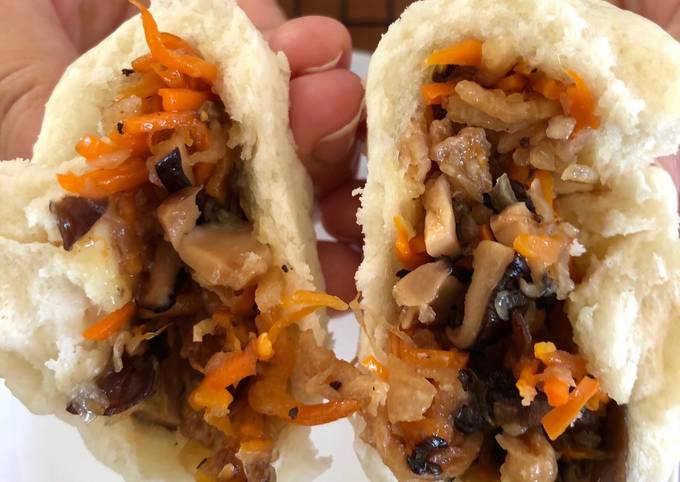
Fluffy steamed dumplings. Often in the north, retail bánh bao chay are sweet and contain milk. In the south, they are more likely to be savory and salty and filled with mushrooms or fake meat. Perfect when fresh and soft on a cool evening. Or for breakfast. Or any time, really.
Bánh bèo
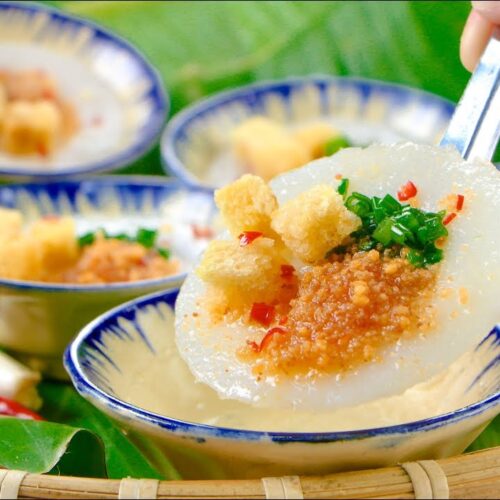
Small circular, gelatinous dish made of rice and tapioca flour, typically served with dried shrimp, pork floss, radish slaw, and dipping sauce. Originated in Huế, common in HCMC
Bánh bột lọc
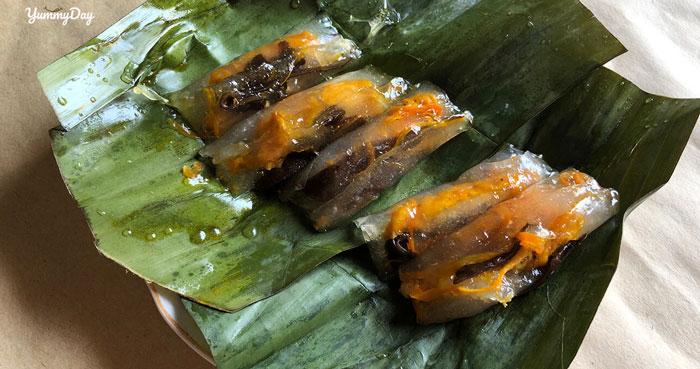
Translucent rice floor and tapioca ‘cakes’ usually filled with shrimp or pork belly. A truly unique Vietnamese dish found primarily in Central Vietnam. Vegan versions usually substitute mushrooms and other vegetables and may even be flavored with coffee to give it a darker color and richer taste.
Bánh chưng
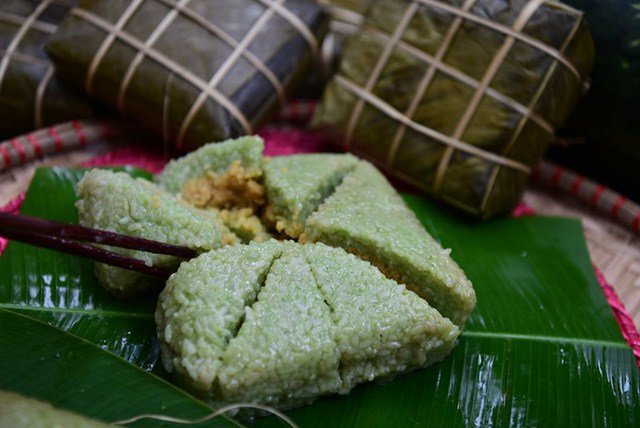
Culturally, the equivalent of a fruit cake. Typically made and shared during the Lunar New Year, a traditional food made from sticky rice, mung beans, and pork, tightly packed and wrapped in banana leaves, then boiled for hours in a large pot. Before the banana leaf is peeled off and the cake is eaten, it resembles a heavy green package. Typically eaten with molasses. Available during Tết throughout Vietnam.
Bánh chuối
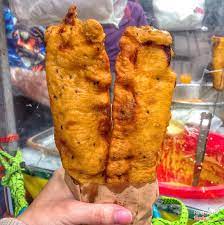
Ripe banana dipped in rice flour batter and deep friend. Reminiscent of America fair food. Most popular in Western Vietnam but available everywhere.
Bánh cốm
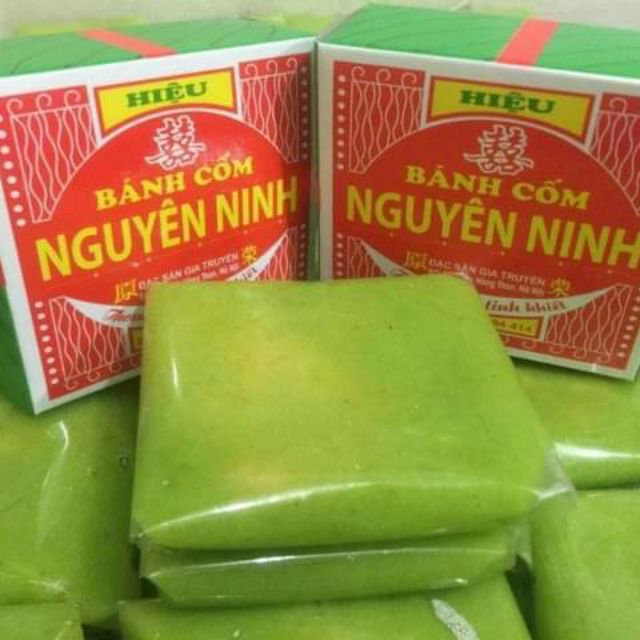
A sweet and slightly chewy cake make from baby rice and filled with mung bean paste. These are vegan and can often be found at Winmart.
Bánh cuốn
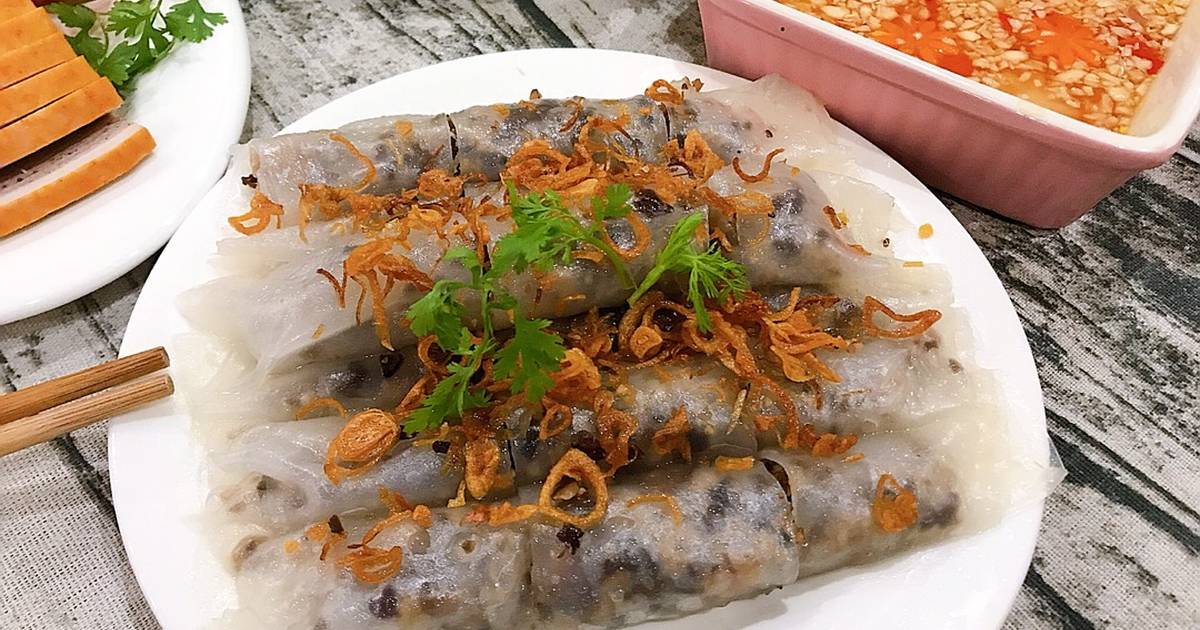
Thick freshly steamed sheets of rice paper either folded over [Hà Nội] or rolled [HCMC] with wood ear mushrooms. Topped with friend scallions and served with dipping sauce.
Bánh đa
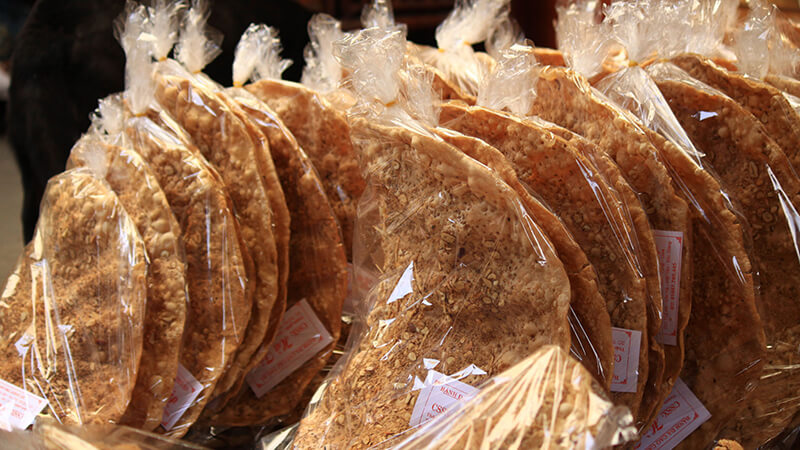
Large toasted rice crackers that typically containing either sesame, peanuts, coconuts, and occasional fish sauce and pork. Fairly cheap and plain. Originated and most popular the provinces just north of Hanoi, notably Bắc Giang and Bắc Ninh. Typically purchased either roadside or from mobile street vendors on bicycles.
Bánh đa xúc hến
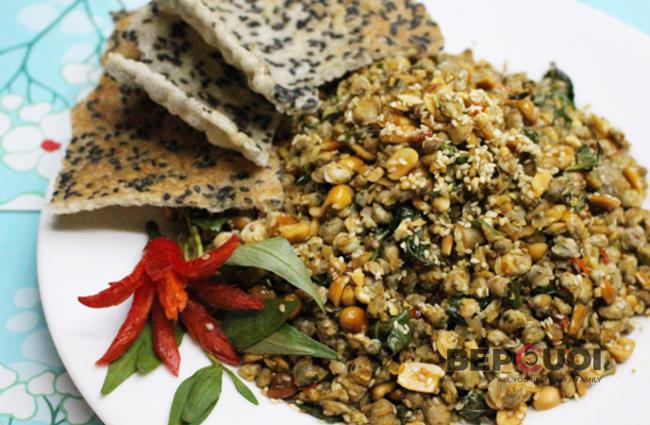
‘Bánh da salad’ served traditionally with sauteed clams, lemon grass, chili, onion, garlic, and coriander. Plant-based versions substitute peanuts for clams. Tasty, flavorful, and warm. A great way to break up the monotony of rice-based dishes. Popular primarily in Central and Southern Vietnam.
Bánh gai
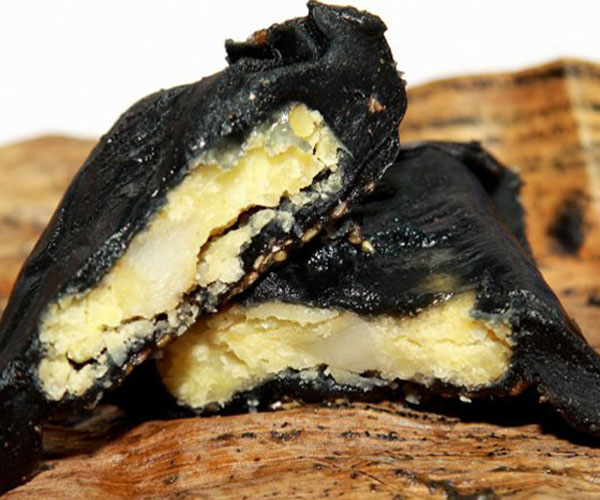
Sweet glutinous rice cakes wrapped in leaves and filled with mung bean paste. Originated in Thanh Hóa and popular in north central provinces ranging from Ninh Bình to Nghệ An. Though they appear the be vegetarian, they often include a small amount of pork fat the prevent the cakes from sticking to the leaves.
Bánh giò
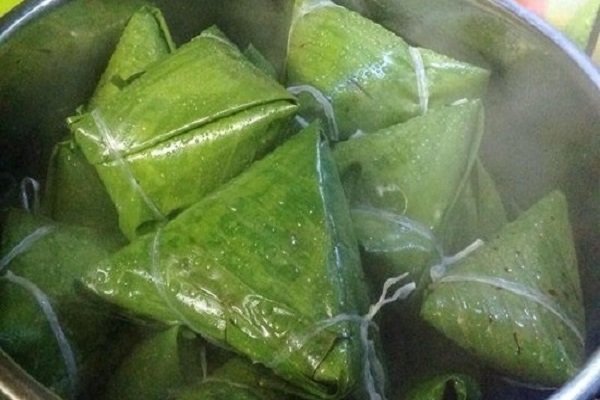
A savory appetizer and snack favored in the North. Glutinous rice cake, typically filled with ground meat, onions, and mushrooms, wrapped in a fragrant banana leaf and served with sweet syrup or chili sauce. Vegan versions typically contain a mixture of mushrooms and possibly mung beans and can be found at many traditional chay places.
Bánh khoai (Hà Nội)
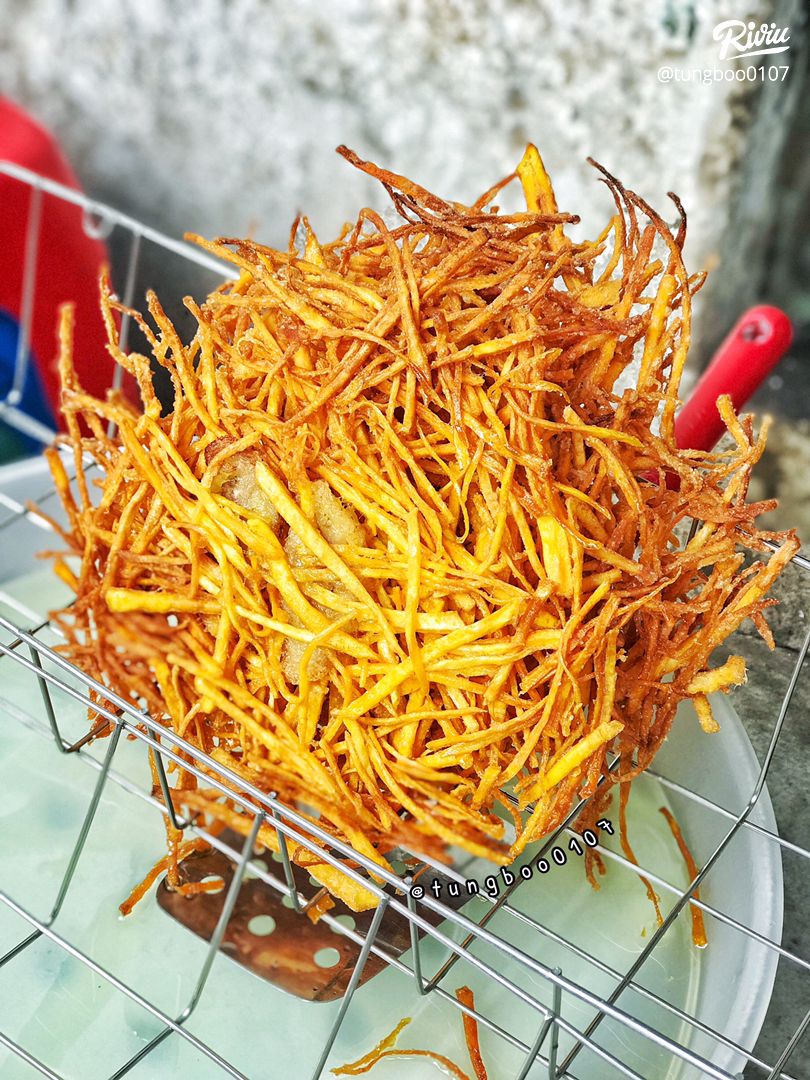
Similar to bánh chuối, only with potato instead of banana.
Bánh khoái (Huế)
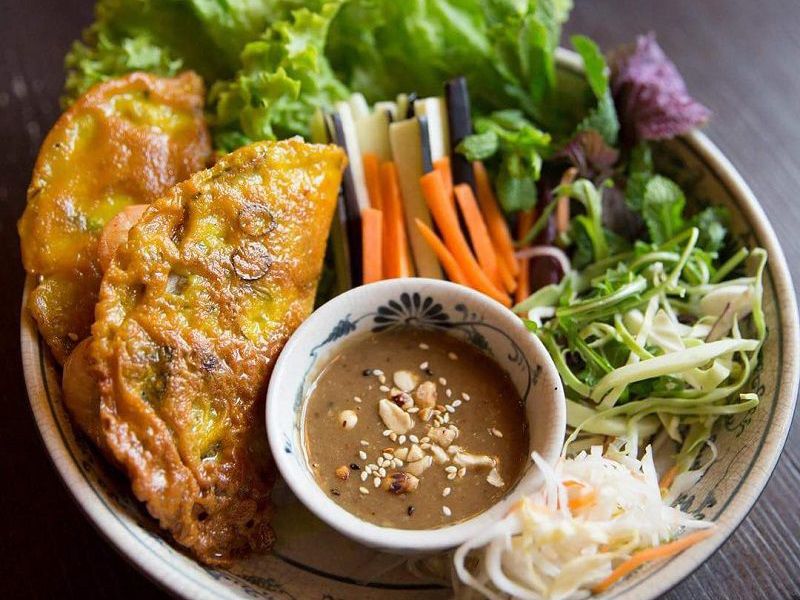
Similar to bánh xèo but smaller and more savory. A fried crispy rice flour ‘omlet.’
Bánh khọt
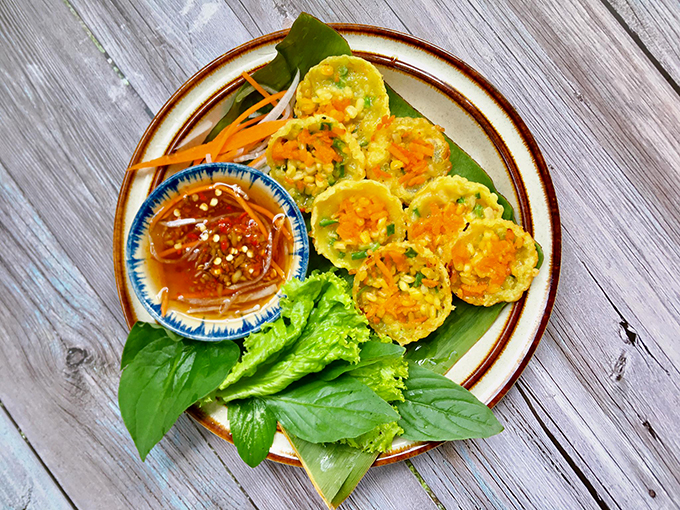
Small circular crispy rice flour based cakes, flavored with turmeric and often served with shrimp. Most popular in south Central Vietnam.
Bánh mì
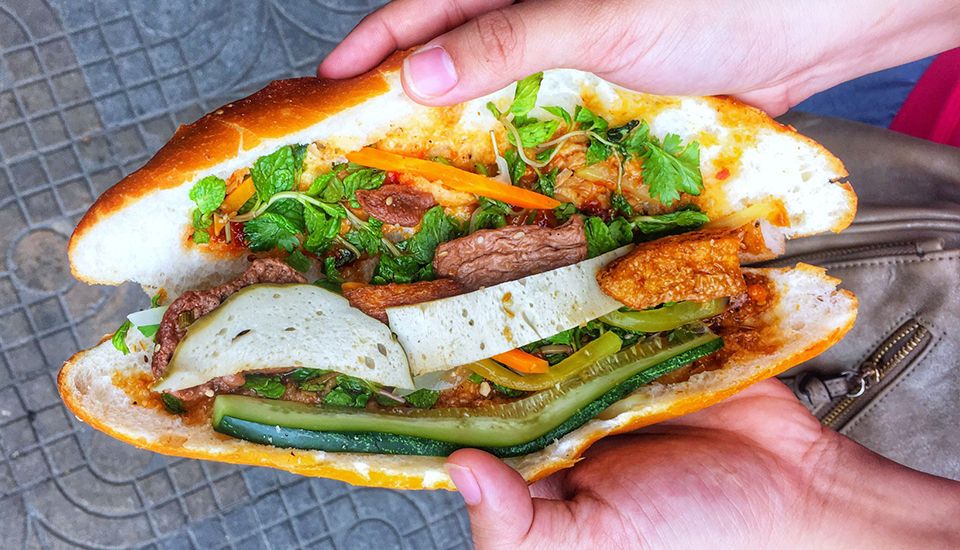
Literally means 'bread,' the common word for the world-famous Vietnamese sandwich. The best Vegan bánh mì is found in Central Vietnam.
Bánh tằm bì
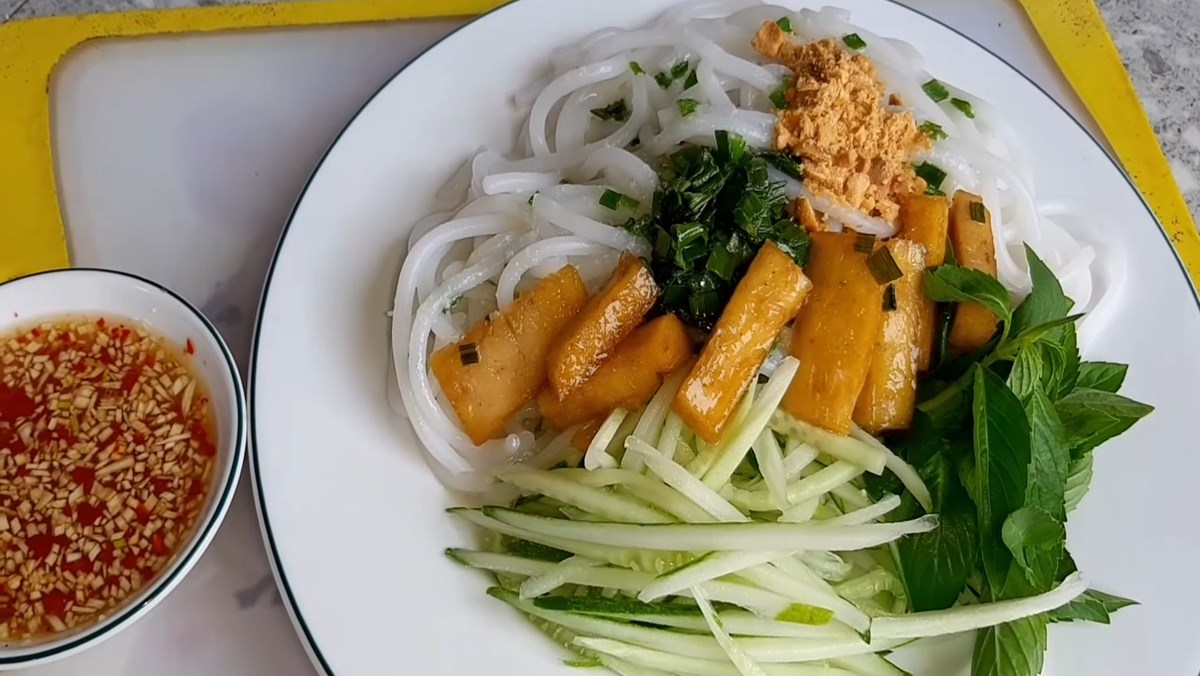
Thick rice noodles with an assortment of fresh vegetables and grilled meat, served with a sweet and sour coconut sauce. One of the more obscure and most delicious dishes on this list. From Western Vietnam but can sometimes be found in HCMC. Rarely found in Central and Northern Vietnam. Ìf you stumble upon a vegan version, don't pass up the opportunity to try it.
Bánh tráng ớt
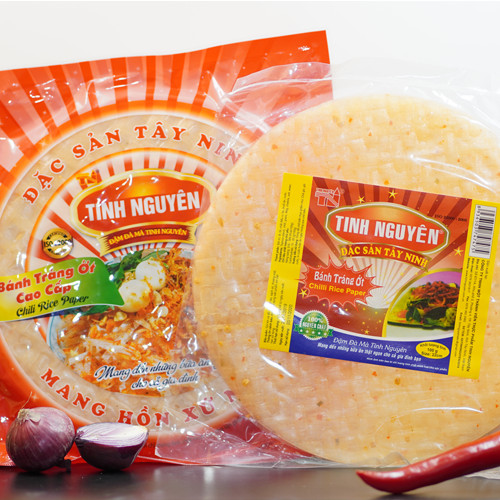
Rice paper flavored with chili and shallots. Originated in Tây Ninh province, not far from HCMC. Vegan and great alone as a snack.
Bánh tráng trộn
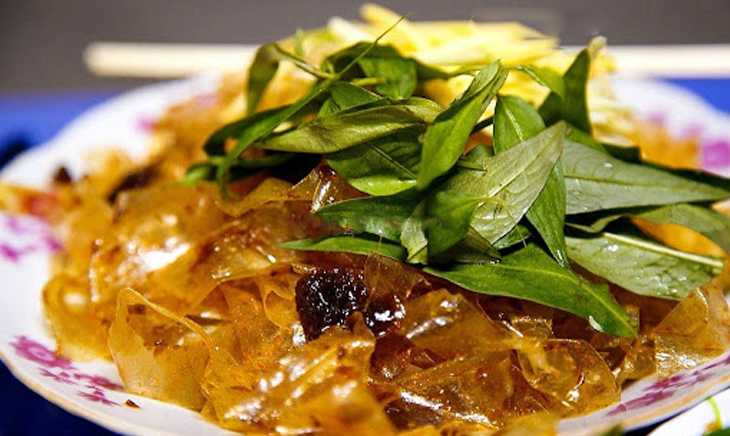
Rice paper salad with a flavor that combines spicy, sour, salty, and sweet.. Varies a bit regionally, but best in HCMC, where it comes with shreds of sour mango, peanuts, friend shallots, chili oil, and herbs. Often sold outside of schools - it’s a favorite snack of young students. Not typically vegan/vegetarian, but can be ordered as such from many vendors (hold the shrimp, pork floss, or quail eggs).
Bánh trôi
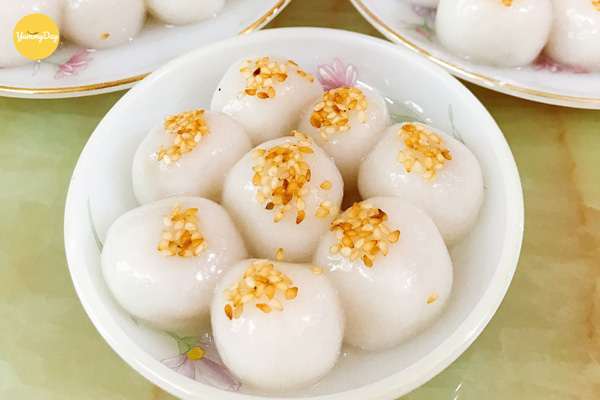
Glutinous rice balls filled with sugar, sprinkled with sesame seeds, and served in syrup. Also called bánh chay, they are always vegan. Available in northern Vietnam, popular during the ‘cold food festival.’
Bánh trung thu
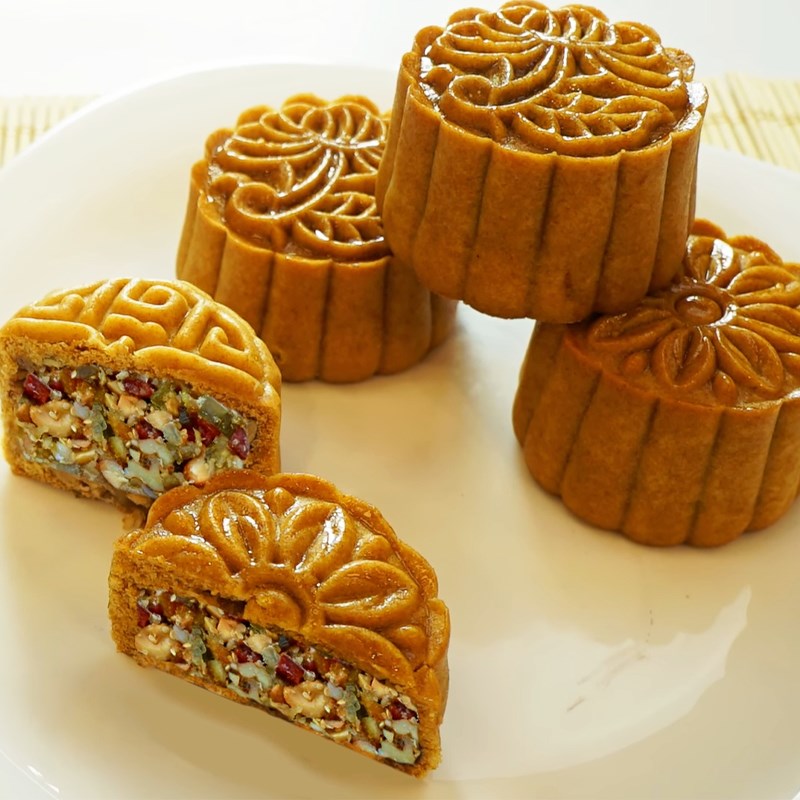
Also know as moon cake, a traditional food during the Mid-Autumn festival. Typically sold roadside and at many major retailers around the country leading up to the Fall holiday. Most contain meat and eggs. Vegan ones are also available, often served with sweet mung bean or candied nuts.
Bánh xèo
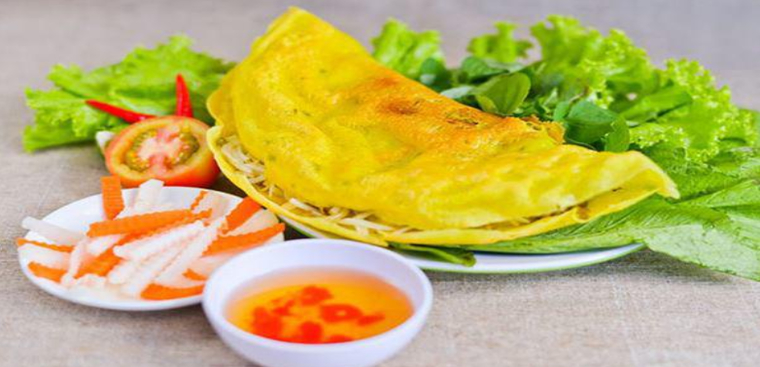
Varies in presentation by region, and most popular in the central and south. Those in HCMC are especially enormous. It’s like a rice flour ‘omlet’ which typically contains sprouts and shrimp. Often wrapped into sheets of rice paper and lettuce and eaten with a sweet and sour fish sauce-based dipping sauce.
Bò bía mặn
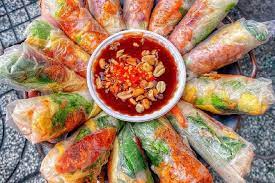
Rice paper wrapped around fresh vegetables and peppery pork. Common in HCMC.
Bò bía ngọt
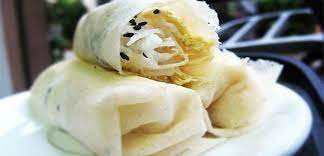
A soft and fluffy rice paper (which contains milk and egg) wrapped around a crispy sugar bark, fresh shredded coconut, and black sesame seeds. Popular in Hanoi and the north.
Bún chả
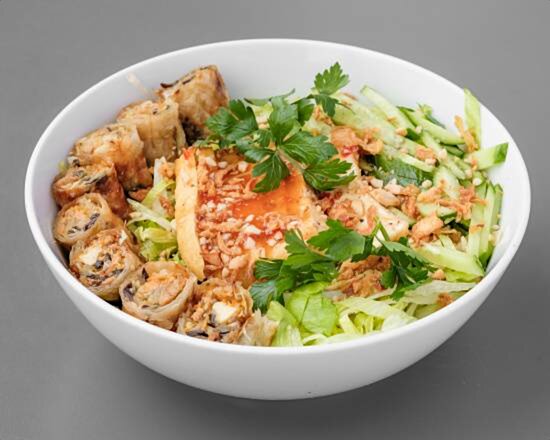
A Hanoi lunch time favorite. Chả giò, lettuce, herbs, shredded fresh and pickled vegetables, and toasted over rice vermicelli with a sweet, sour and salty sauce.
Bún chuối đậu
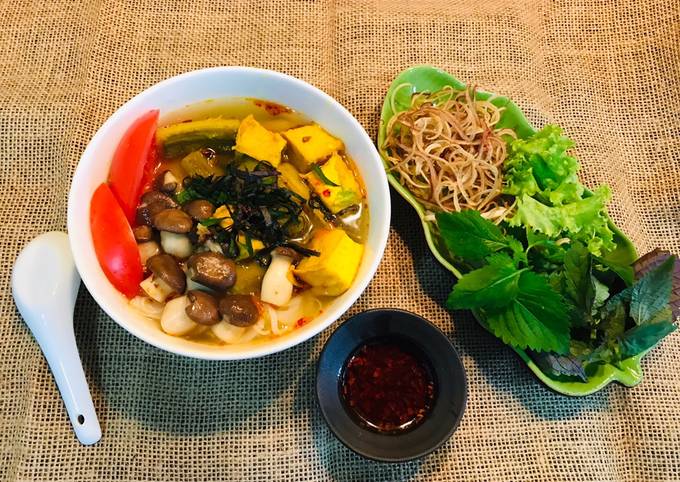
A unique and popular northern Vietnamese dish. Rice noodles in a warm broth with unripe bananas, tomatoes, ginger, turmeric all cooked to perfection. Normally contains snails but many quan chays serve it with tofu instead. A must try.
Bún đậu
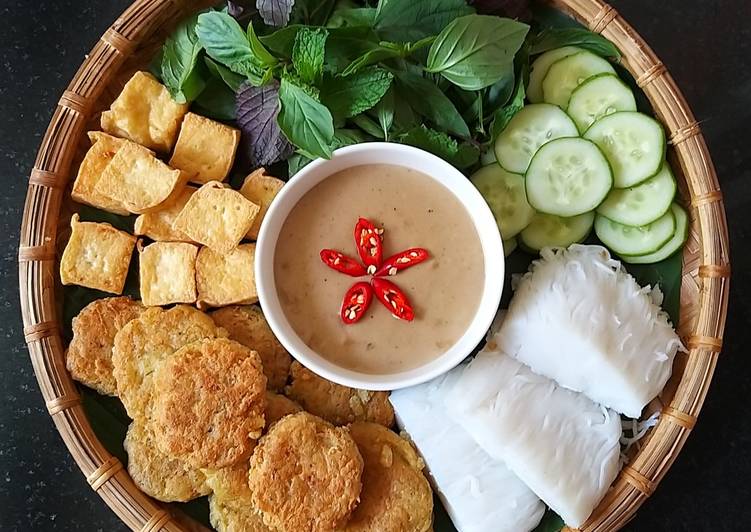
A Hanoi lunch-time favorite for office workers. A large plate of fried tofu and meat, fresh cucumbers, herbs, and tight clumps of fresh rice vermicelli. It’s typically served with a foul concoction of fermented shrimp paste, juice from limes, and red chilies. If you can stand the smell of those eating next to you, often at plastic tables in an alleyway (and don’t mind a bit of oil shared with meat), you can order it with just tofu and substitute your own mixture of soy sauce, lime, chili, and a dash or two of vinegar.
Bún măng
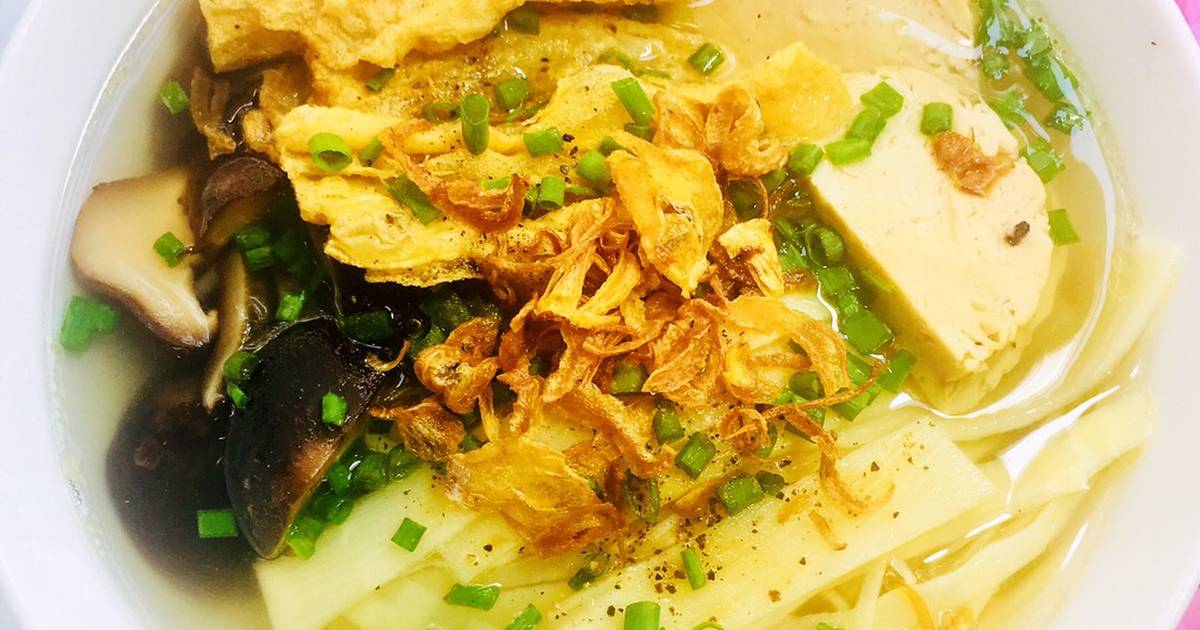
Rice noodles, bamboo, and green onion in a warm, rich broth. Typically served with duck or chicken, and in vegan versions with strips of fried tofu or mock meat.
Bún nam bộ / trộn / thịt nướng
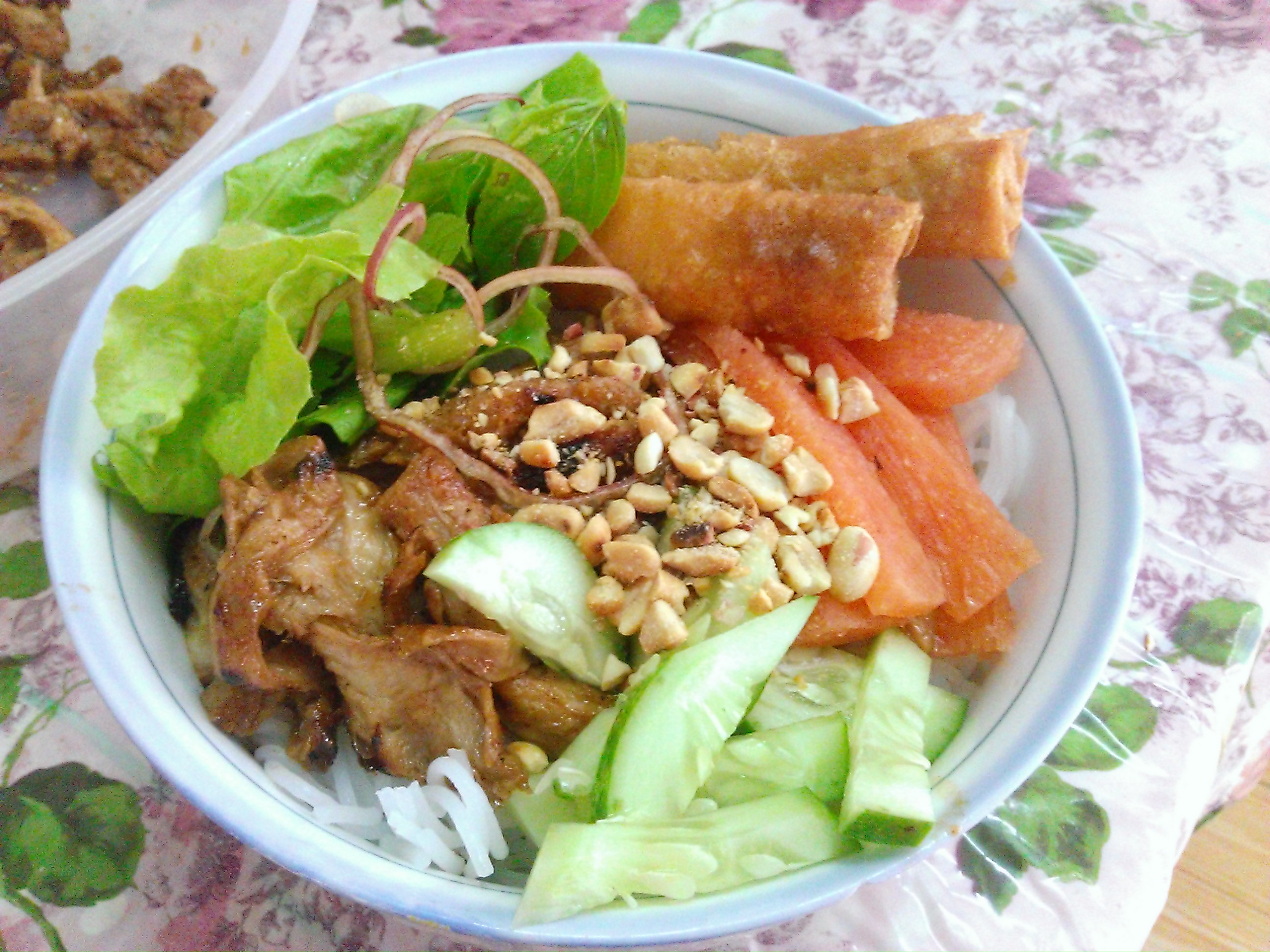
Fresh rice vermicelli, grilled meat, radish and carrot slaw and fresh lettuce, lightly served with a sweet and sour sauce containing nước mắm (fish sauce). Vegan versions are often available with mock meats and fried tofu. Famous and most flavorful in the South. Called bún thịt nướng in HCMC and bún nam bộ or bún trộn in Hà Nội.
Bún riêu
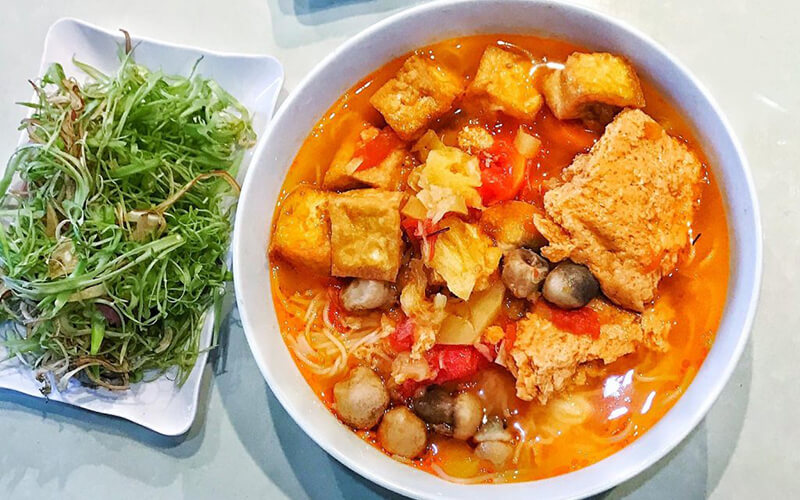
A local favorite. Flavorful rice noodle soup which is internationally underappreciated compared to phở. Made famous in Hanoi yet delicious in both the north and south. A warm broth of crab, giò and a variety of meats, and tomato, served along with fresh herbs and greens. Various veganized versions can be foundat almost any mid to large size quan chay.
Canh chua
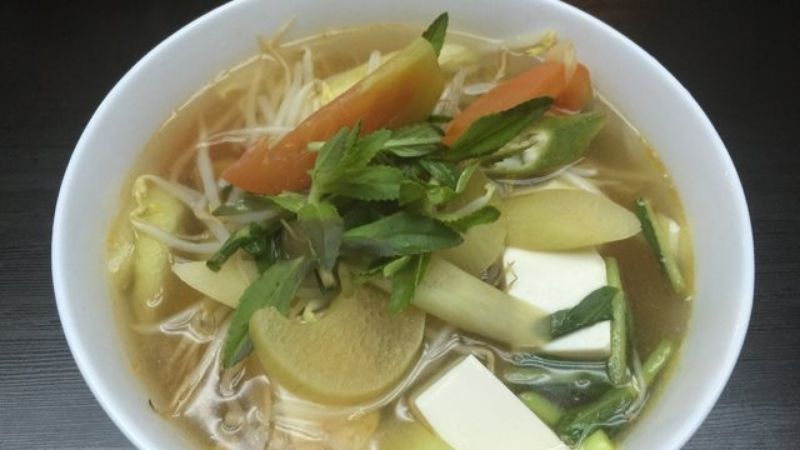
Sweet and sour soup. Originally from the Mekong Delta but now popular across Vietnam. Vegan versions include pineapple, tomato, tart stalks of elephant ear, and sprouts. A refreshing way to end a meal.
Cao lầu
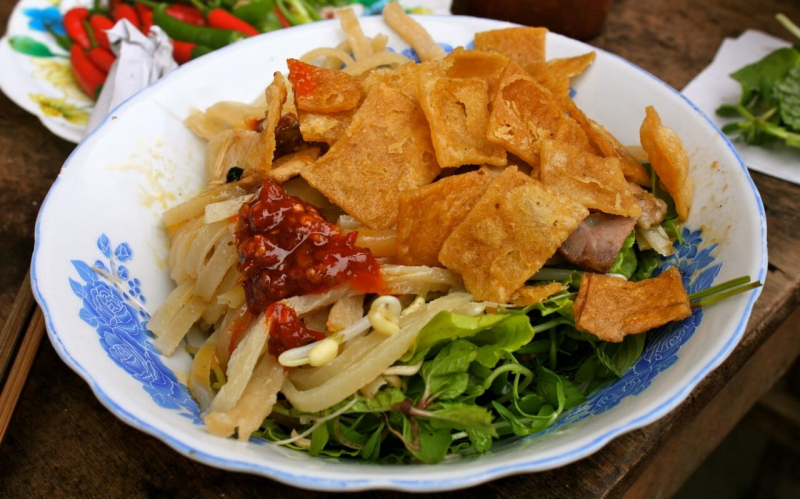
Mouth-watering dish famous and exclusively found in the Hội An area. Using fresh thick and hearty noodle made with local well water. Includes pork, fresh vegetables, and crispy fried noodles in a rich, glaze-like sauce. A must-try, the rarity of which will leave you longing for more.
Chà bông / Ruốc
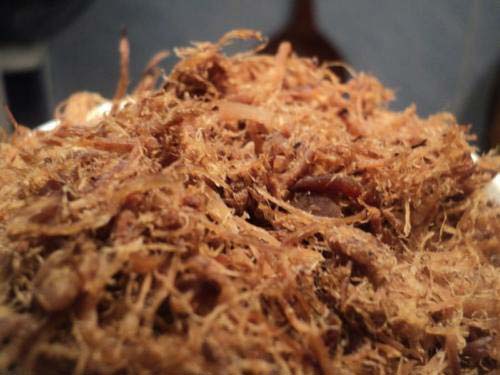
Pork floss. Often serve in or on other dishes. Traditional and local vegan versions are often available, made from mushrooms. Check the freezer display of your local quay chay.
Chả giò / nem rán
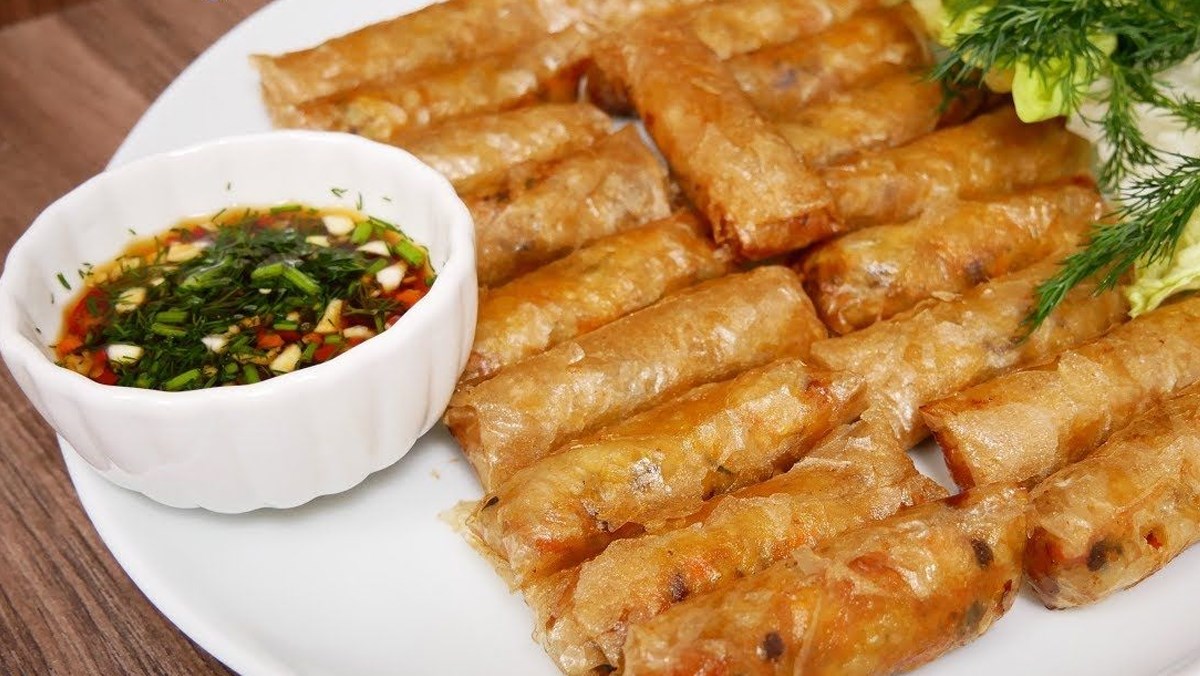
Fried spring rolls, usually filled with ground meat and diced vegetables. Often eaten with bún noodles with a sweet and tangy sauce or eaten by themselves as a side dish.
Chao
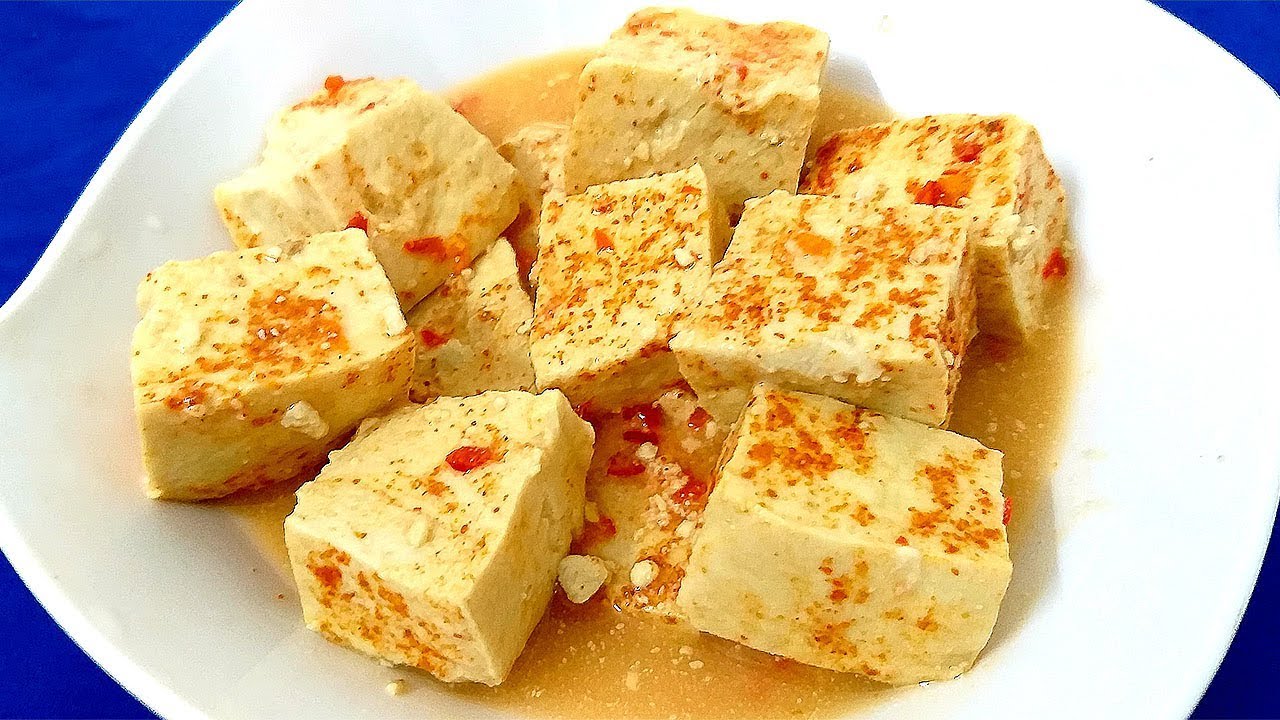
A fermented paste made from soy beans. Briny and often served with dishes in Central and Southern Vietnam. Store boight varieties are vegan, but homemade versions may include ground prawns.
Cháo
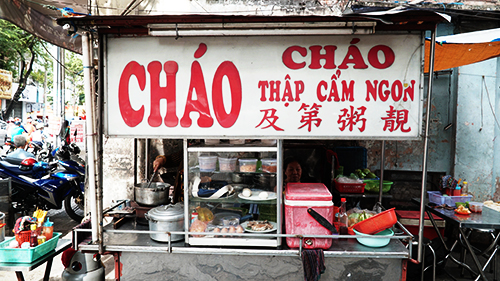
A rice porridge typically flavored with chicken, mushroom, and carrot. Often eaten when people have the cold or flu, similar to chicken noodle soup in the US. Vegan varieties exist and can even be found in instant versions at many grocery stores.
Chè

Available in many versions and varieties. Unique sweet porridge, served with fruity gelatinous accondimants. In the south, you’ll find large, sidewalk restaurants dedicated to the dish which are brightly lit and fill up in the evenings. Usually vegan but make sure they don’t put condensed sweeten milk (sữa đặc) in it.
Cốm
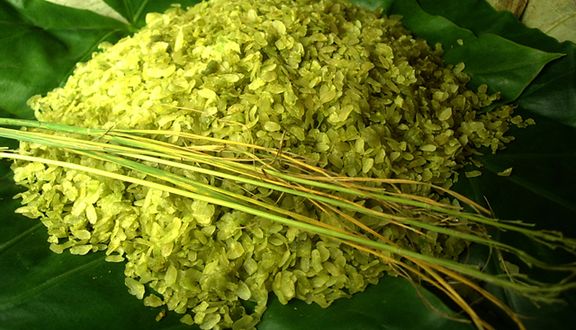
Baby rice cooked over low heat and pounded flat. Usually found during Autumn in the north and sold by street vendors.
Cơm
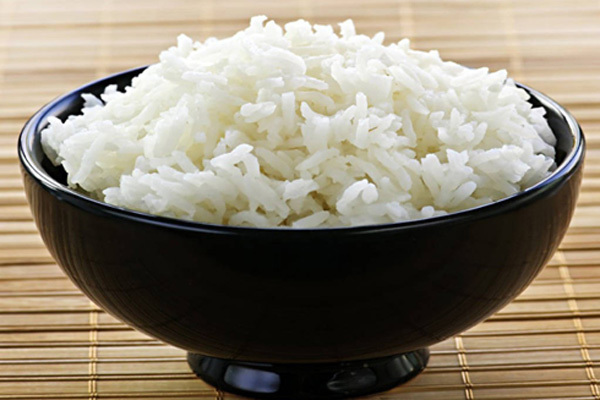
This word means both generically ‘food’ and fluffy steamed white rice.
Cơm rang
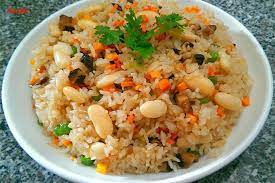
Fried rice. No need to explain.
Cơm tấm
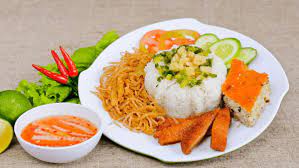
‘Broken rice.’ A Saigon signature dish. Consisting of steamed cracked white rice, fresh cucumber and vegetables, and marinated grilled pork. Serve with a sweet and tangy fish sauce. Can be found vegan at chay places in the South.
Cuốn diếp
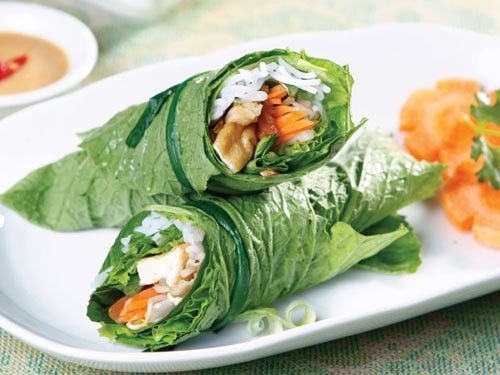
Mustard greens rolled with shrimp and meat, fried tofu, and tied with green onion. Served with a salty garlic dipping sauce from dried shrimp. Vegan versions usually include mushrooms and a dipping sauce made from fermented soy bean south common mostly common in central Vietnam. Usually found at mid or higher end places.
Đậu phụ sốt cà chua
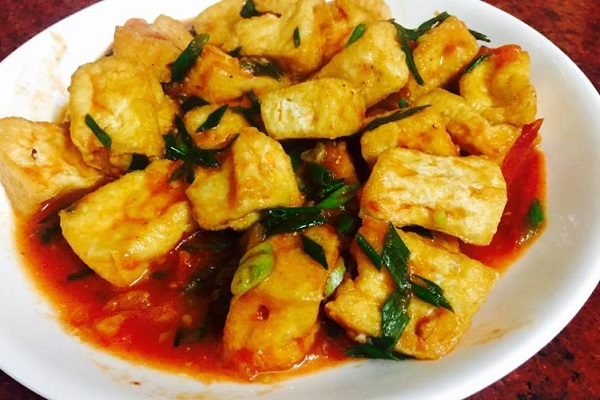
‘Tofu with tomato sauce.’ When you first hear it, it sounds odd. But this is a Vietnamese homefood stable, what macaroni and cheese is to many America tables. A fairly basic dish with a tangy, salty, garlicy sauce. If you’re ever out of options in the northern Vietnamese countryside, this will likely be your go-to option. Just ask for it without fish sauce (nước mắm). In southern Vietnam, you’ll find it a bit sweeter.
Dưa cải / dưa chua
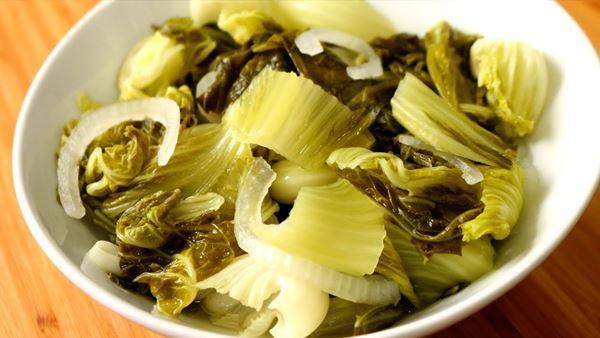
A briny pickled cabbage that's always vegan. Salty in the North. Even saltier ond slightly oily and sweet in the South.
Gạo lứt
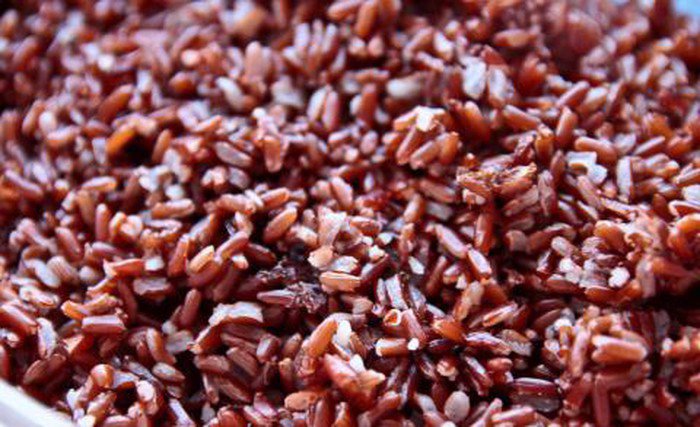
Whole grain rice. Rich in minerals and fiber.
Giò
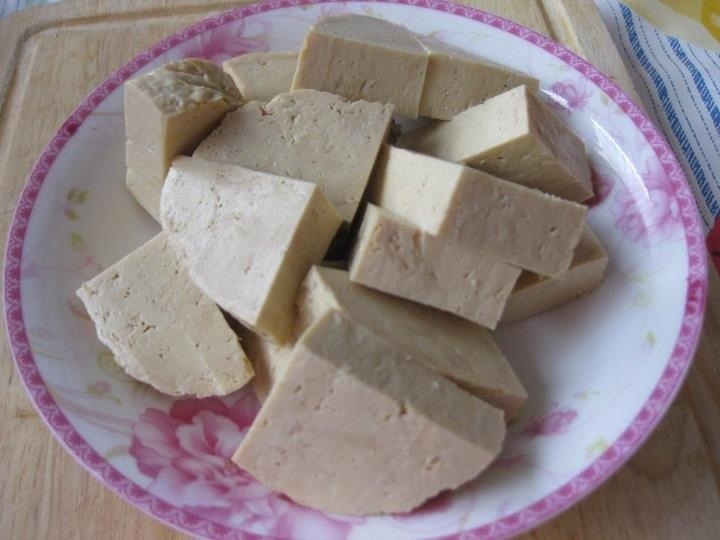
A sort of boiled sausage made from lean cuts of meat and wrapped in banana leaf. Vegan versions are frequently made with seitan.
Gỏi đu đủ
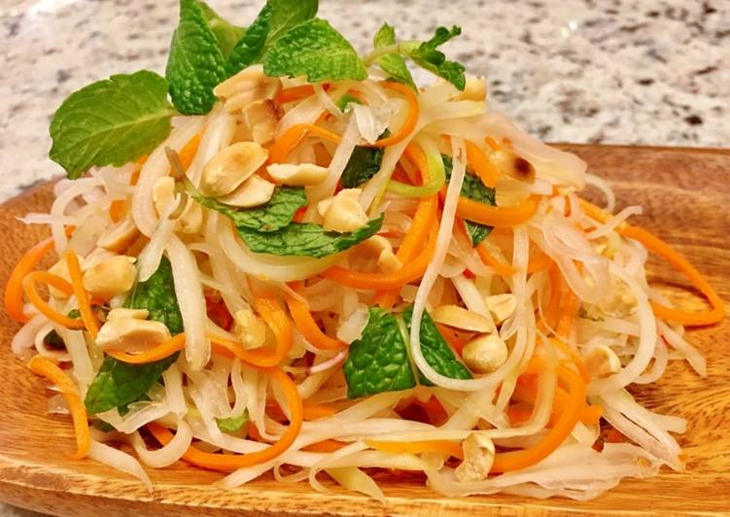
A spicy shredded papaya salad with herbs,shallots, peanuts and more. . Potentially originated in Laos, now popular in many Southeast Asian countries. Featured on the menu of many chay restaurants in the Central and Southern region. Don’t miss this on your holiday.
Gỏi cuốn
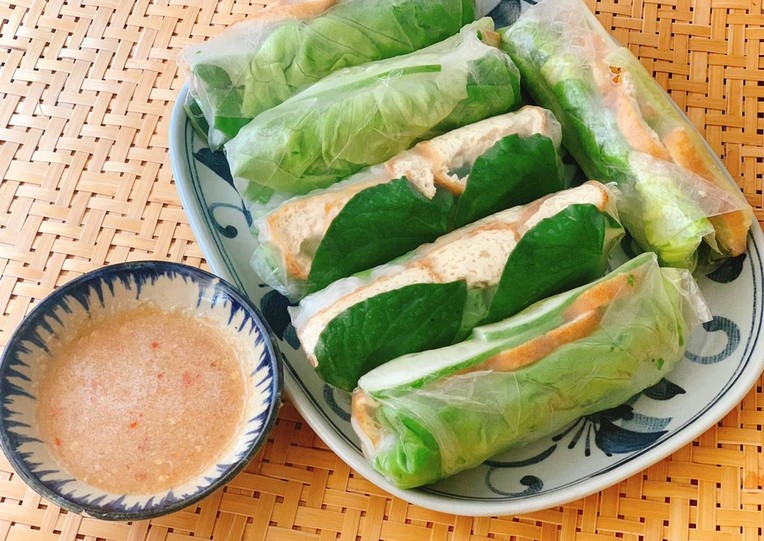
The quintessential Vietnamese spring roll, consisting of prawn, bún, and fresh vegetables tightly wrapped in thin sheats of rice paper and serves with a sweet and savory peanut sauce. Another must try and stable of the South.
Hủ tiếu
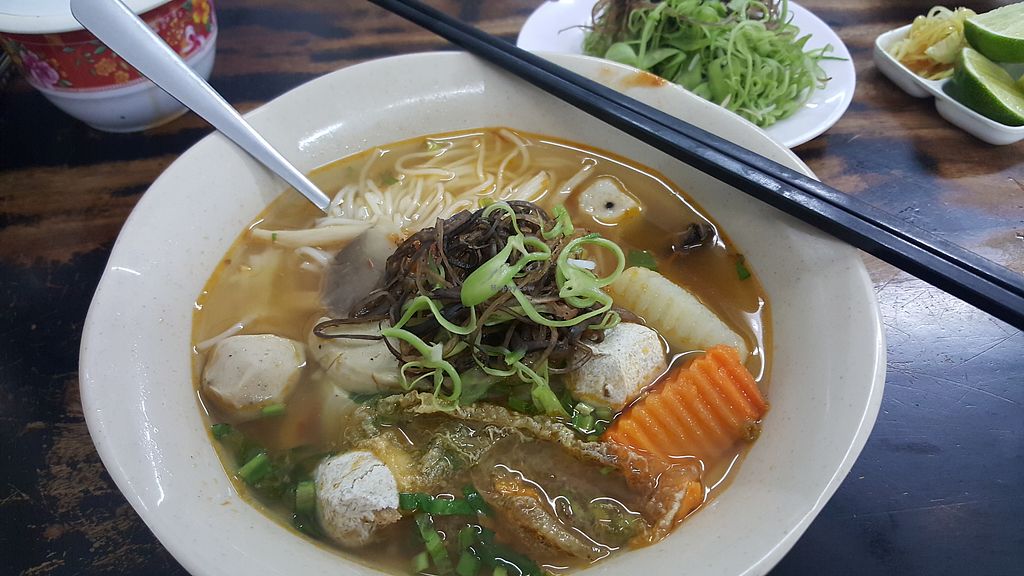
A peppery brothy soup. Hủ tiếu is to Sài Gòn what phở is to Hà Nội. Contains various meat, usually shrimp and beef, along with large chunks of carrots and potatoes with thin, flat rice noodles.
Kẹo lạc / kẹo đậu phộng
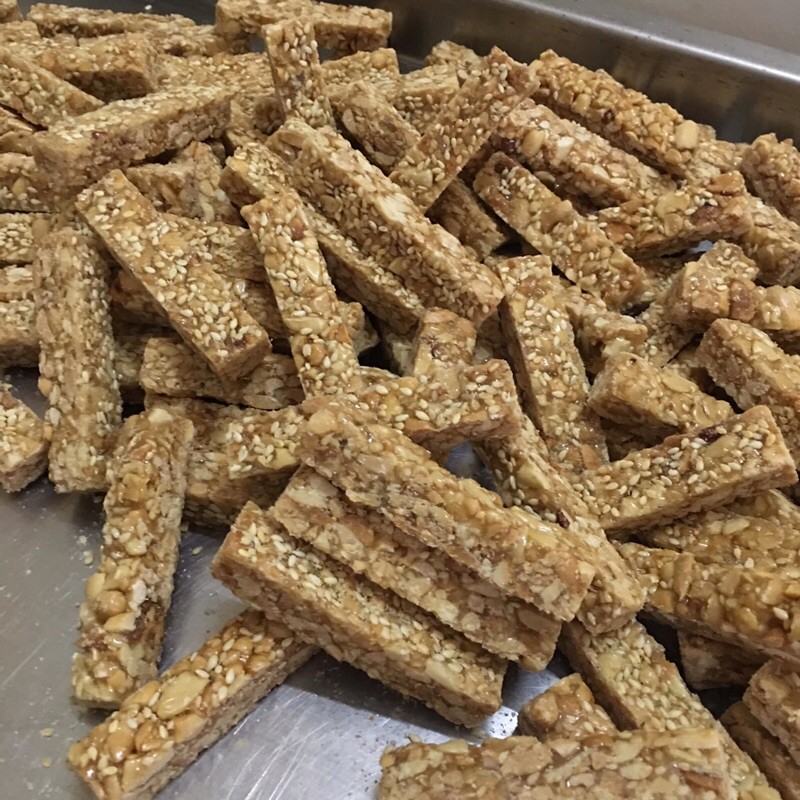
A brittle candy consisting of peanuts and sesame seeds in a vanilla flavored hard sugar. A specialty of Thái Binh noear Hà Nội. Traditionally served with green tree. Most versions are vegan, but they occasionally contain milk or butter as well. On the street, you can buy them with refreshing trà đá.
Lẩu
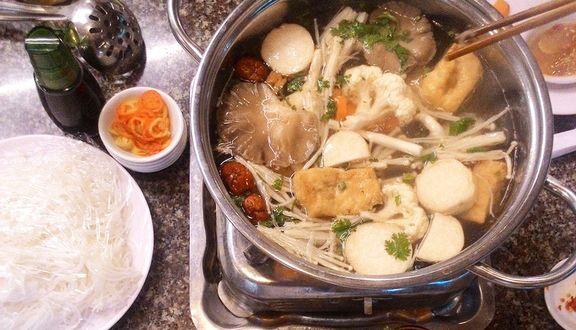
Hot pot. A local favorite for social gathering. Often a build-your-own set up with instant noodles.
Mì / mì gói
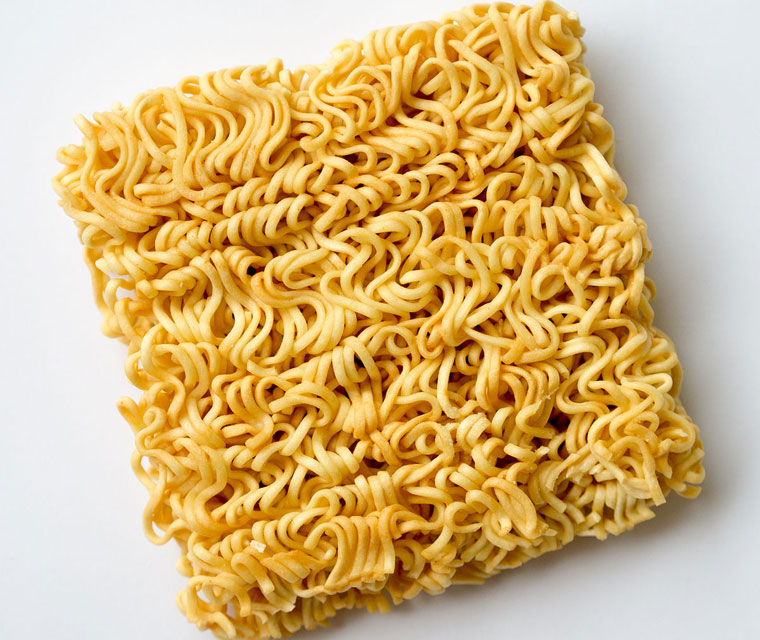
Instant noodles. Cheap packets, usually of deep fried wheat noodles, and occasionally rice noodles. Wider varieties exist around Asia. If you look for them, chay ones can found in most larger grocery store chains and some convenience stores.
Mì quảng
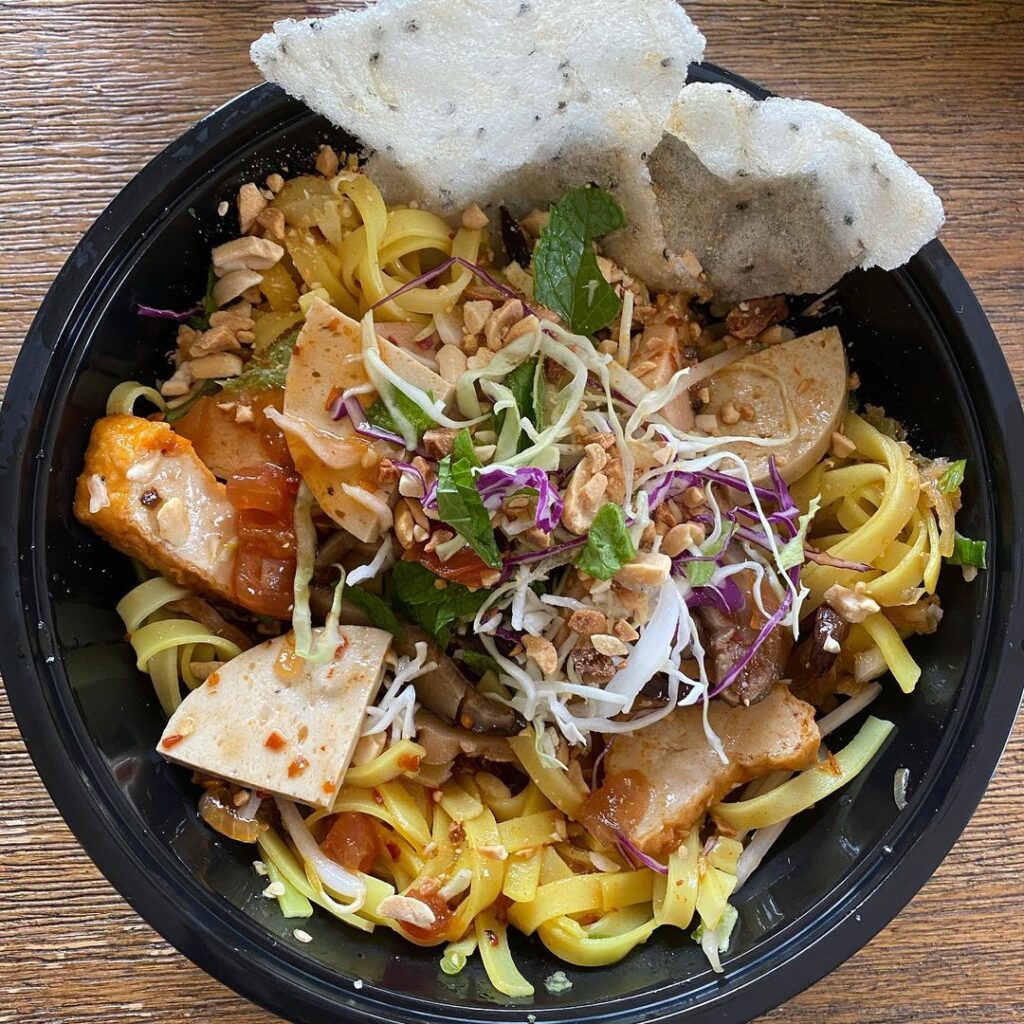
Đà Nẵng’s specialty noodle dish. Vegan versions usually come some sort of fake fried chicken, tasty boiled pumpkin, ground toasted people, a selection of herbs such as cilantro, green onion, basil or even mint, served in light yet mouth warming sauce flavored of turmeric.
Mì xào
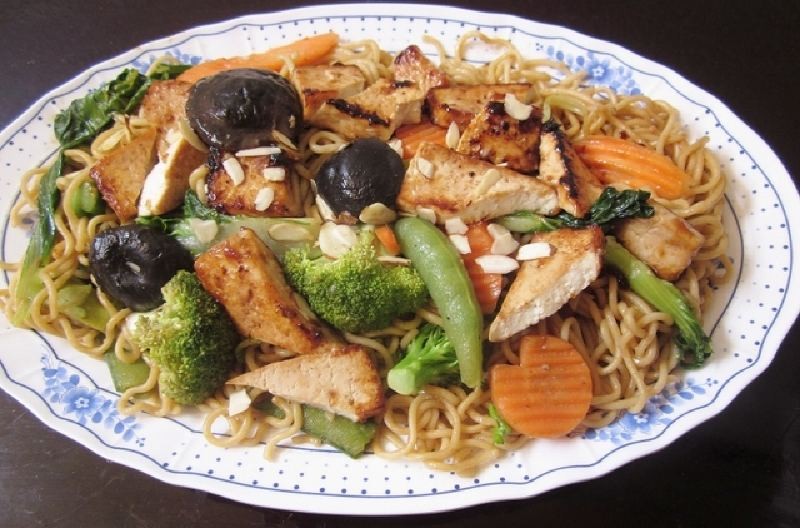
Instant noodles sauteed vegetables and meat. It can be ordered chay in many normal quans, but be sure to be specific about the ingredients you don’t want.
Mứt lạc
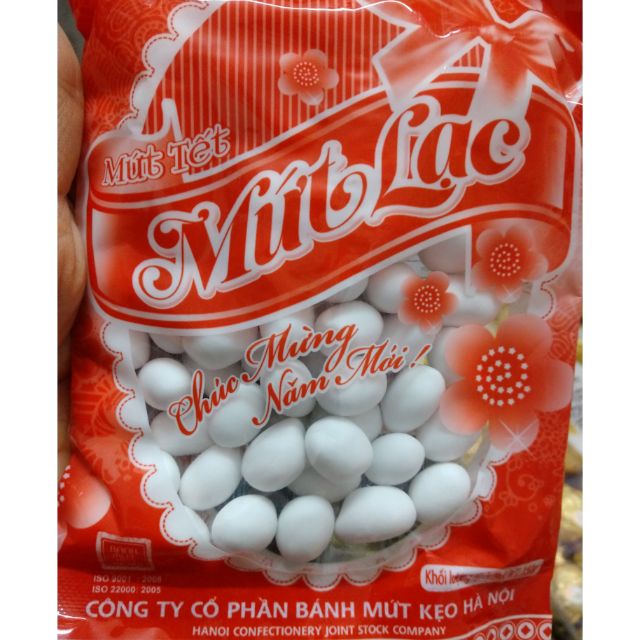
Served at every Chinese buffet in the US. Peanuts with a thick, white sugary shell are also a favorite treat during the Lunar New Year in Vietnam. And they’re always vegan.
Nem chua
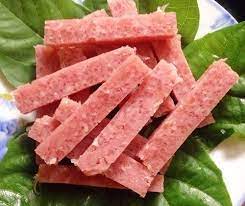
A sour, cured pork sausage flavored with chili and garlic. Most popular in North Central provinces like Thanh Hoa and Ninh Binh. Chay restaurants in the region occasionally sell vegan versions.
Nem cuốn
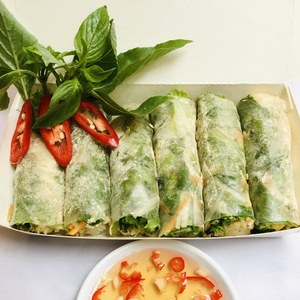
Hanoi’s fresh spring roll. Tightly wrapped with moistens thin rice paper and served with a sweet and tangy sauce. The best vegan versions include fried mushroom, tofu, mung bean powder rice, noddles, lettuce, and carrot.
Ngô luộc
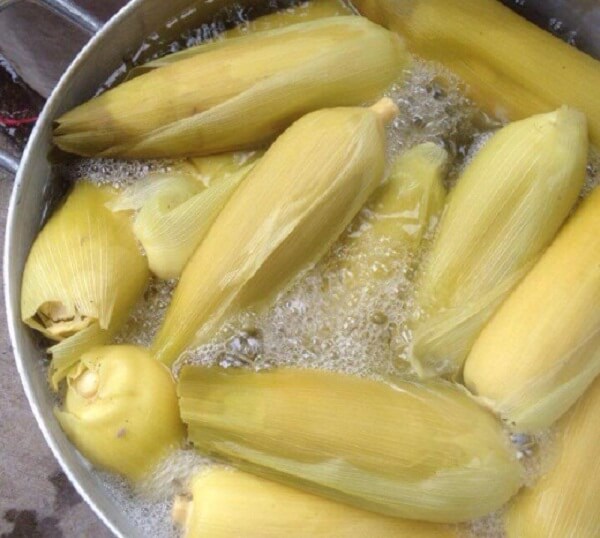
Boiled corn. Often found roadside around the year in Hanoi, and always vegan.
Ngô nướng
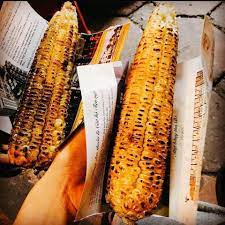
One of the reason to look forward to the cold winters of Hanoi. Fresh corn, grilled roadside, served up cheap to patrons on plastic chairs on corner sideưalks in the evenings.
Nước mắm
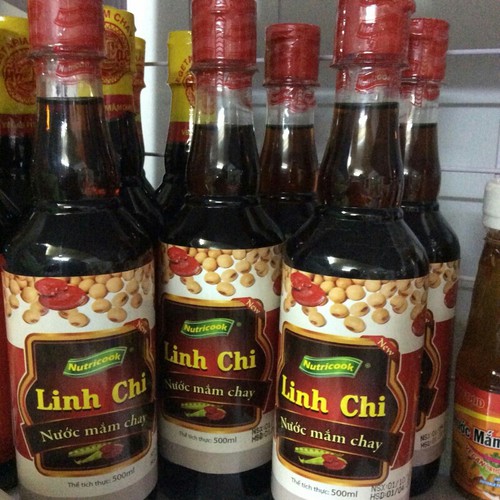
The dreaded fish sauce. While Phan Thiet is known for the best authentic stuff, commericial and small batch vegan versions are made from a wide variety of ingredients, ranging from pineapple juice to linh chi mushrooms. If you’ve ever in a pinch at a regular dinner spot, you can improvise with a combination of juice from tiny citrusy lime-like fruits called quất, garlic-infused rice vinegar, soy sauce (plus fresh red chili pepper for even more flavor).
Nước mía
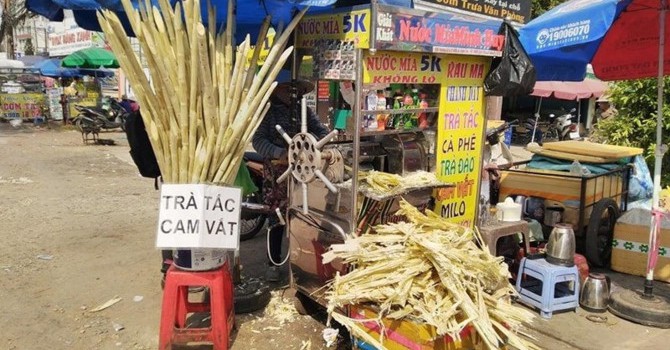
Fresh sugar can juice. Exceptionally refreshing with a slight chlorophyll taste.
Phở

Worldwide, this is the iconic Vietnamese dish. A warm brothy beef noodle soup with hints of cinnamon and anise. Vegan versions can be found around Vietnam, with more traditional versions in Hanoi and sweeter, peppery versions in the South.
Phở chiên
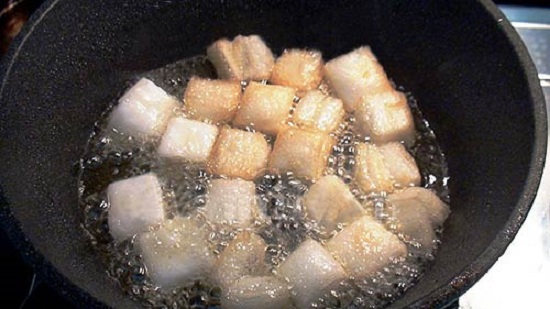
A Hanoi dinner restaurant specialty, especially around Truc Bach lake. Squares of thick rice paper, deep fried to a crisp and then topped with sauteed with meat and vegetables in a rich sauce. No vegan restaurants serve this, but ‘chay’ versions with just vegetables are sometimes available of the larger hole-in-the-wall restaurants famous for this dish. If you’re vegan, make sure they don’t include egg.
Phở cuốn
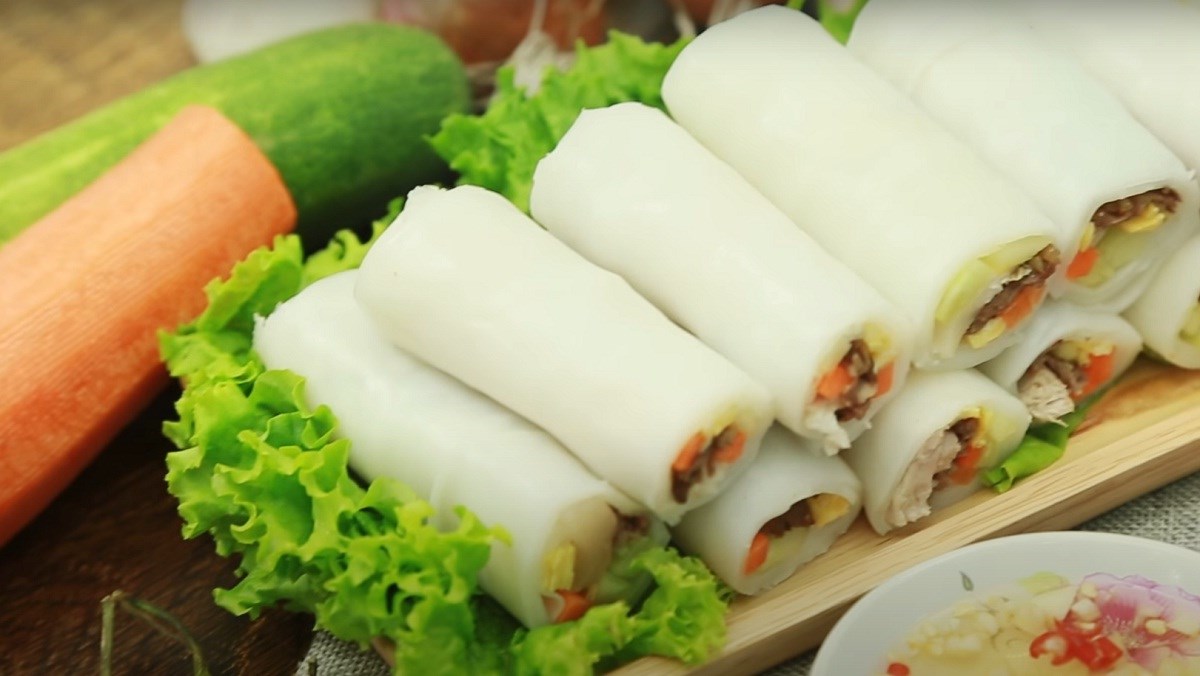
A dish said to have been invented in Hanoi around the Truc Bach lake area. Thick sheets of rice paper, which would otherwise be cut for phở, wrapped with stir fried beef and lettuce, and then dipped in a sweet and sour fish sauce flavored with baby papaya. Like phở chiến, can be found in chay versions with deep fried tofu at the local dives famous for it. Substitute quất juice, vinegar, soy sauce, and fresh red chili pepper for dipping sauce.
Phở xào
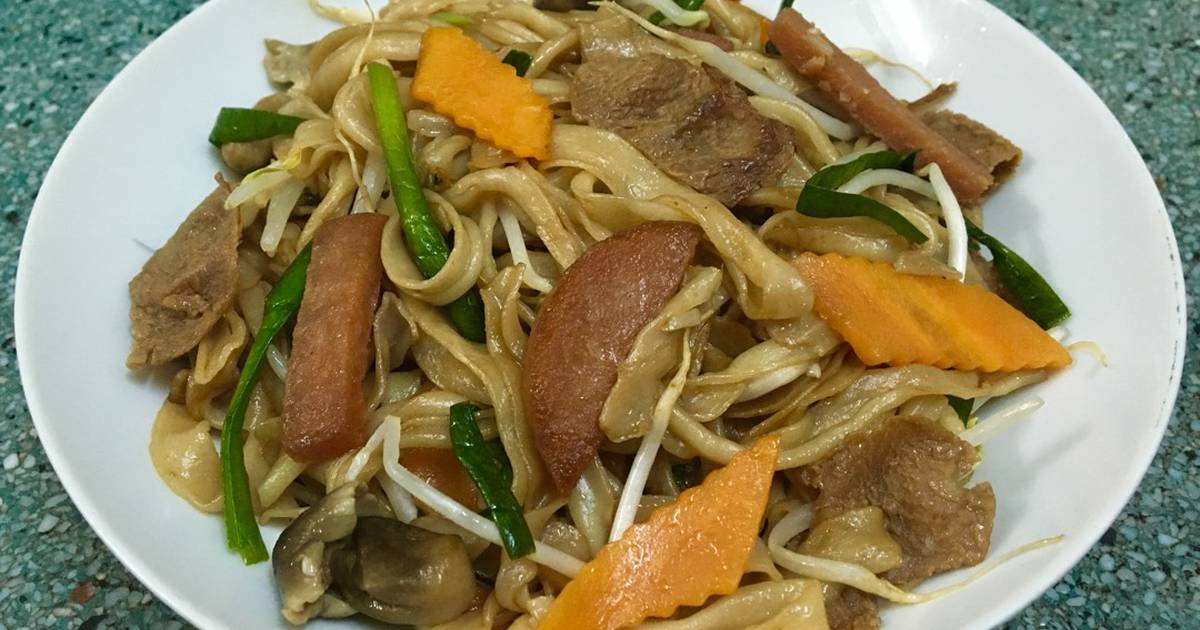
Thick flat rice noodles sauteed with vegetables and a savory sauce that’s salty with a hint of pepper. Popular in Hanoi and becomes spicier and the sweeter as you travel down the country.
Quẩy
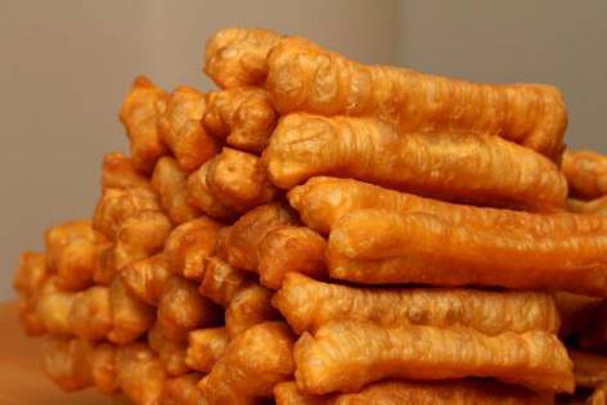
Plainly consists of deep fried rice dough. Normally served with phở or cháo. Occasionally eaten as a snack dipped in chili sauce. Normally vegan, but be careful of the oil it’s cooked in by street vendors.
Rượu nếp
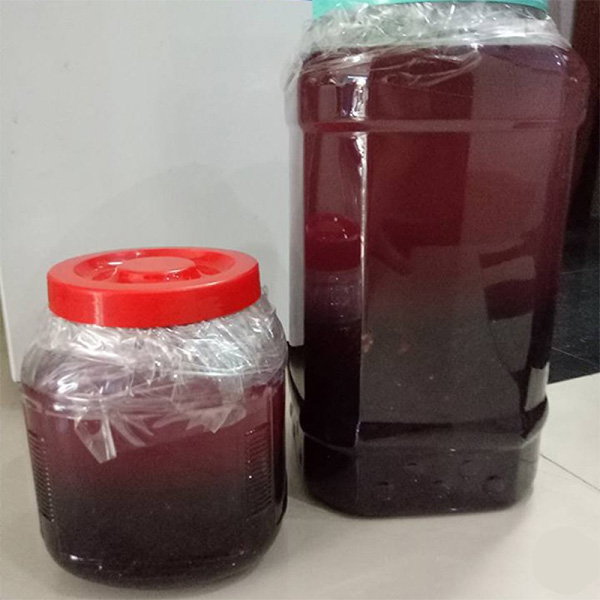
Rice wine. Often infused with ginseng or other herbals. Claimed to by healthy. Vegan unless infused with something insane like a whole cobra.
Trà đá
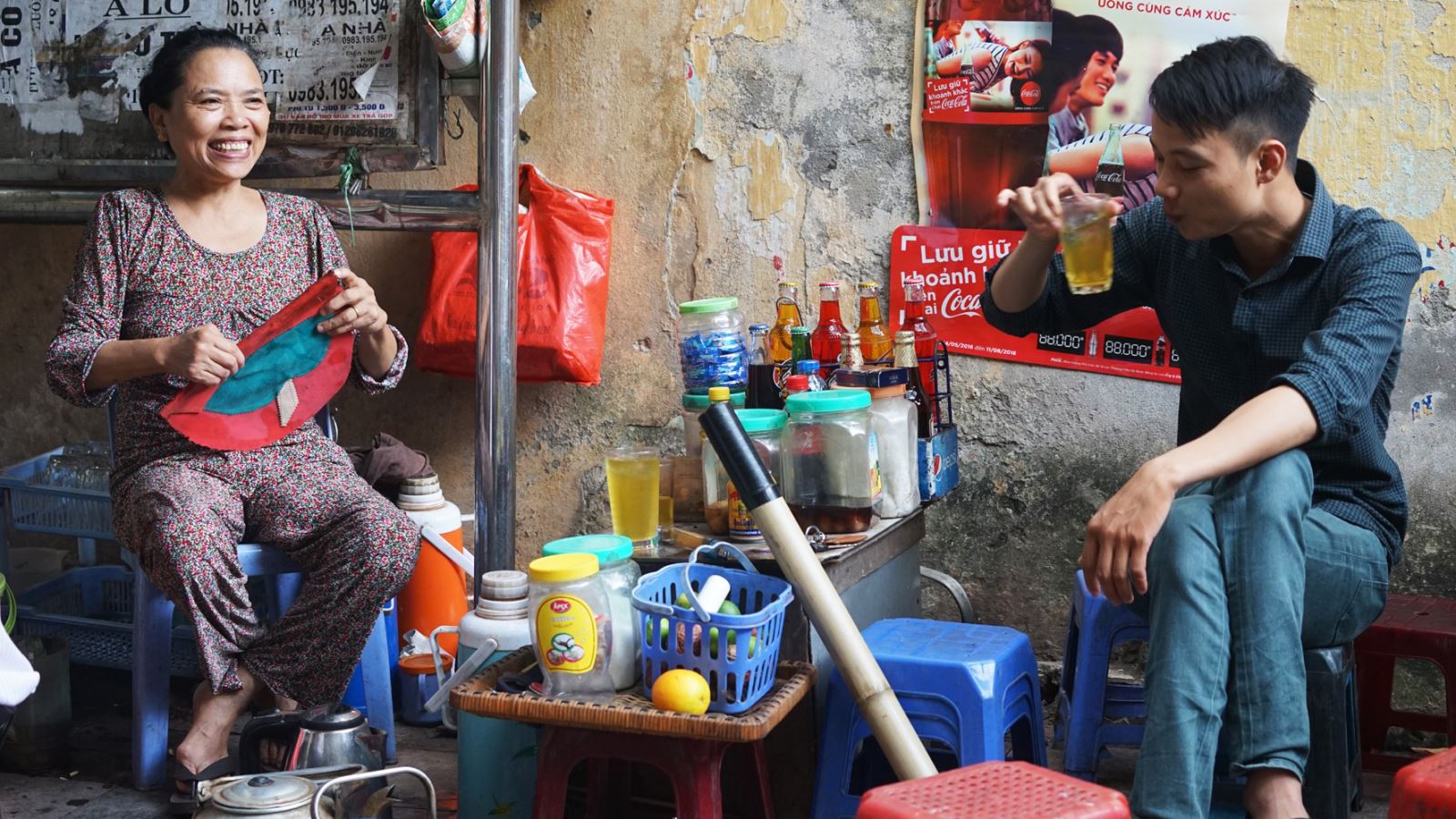
Green tea. Served everywhere, but our favorite is served over ice on the sidewalk for 3,000 vnd.
Xôi
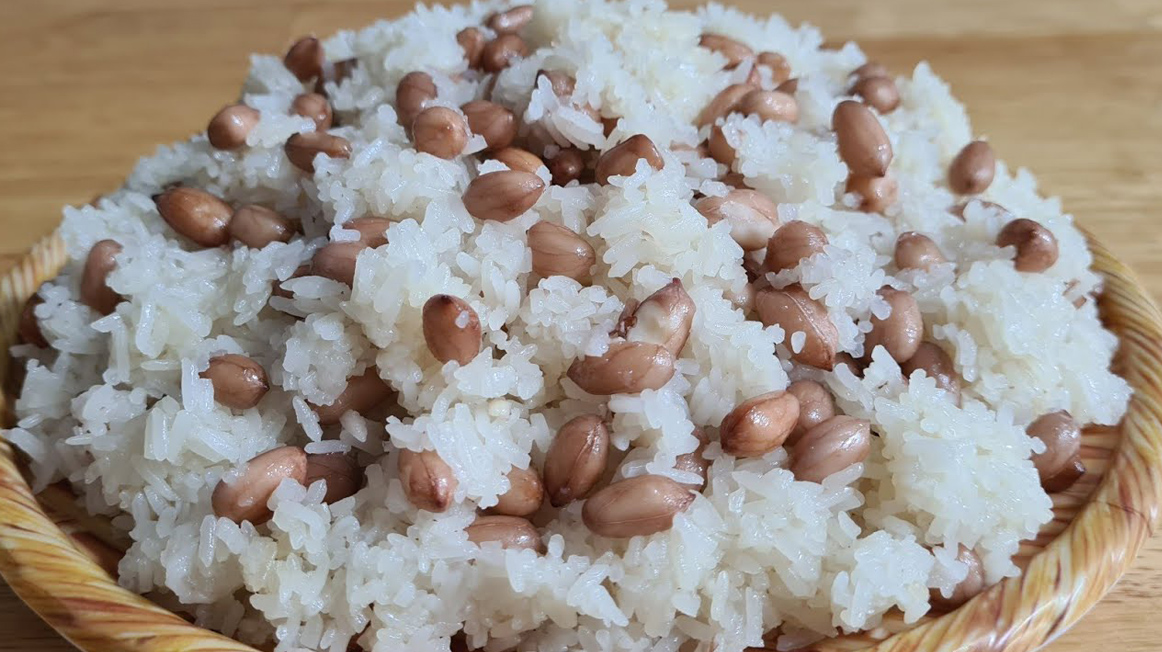
Sticky rice. Eaten around Vietnam for breakfast. Versions in the south are invariable sweeter, often flavored, and have bright pastel colors such as green and purple (from pandan and taro). Versions in Hanoi are more savory and salty, with warmer colors such as yellow (from tumeric or a mung bean topping) or orange (from an extremely healthy fruit called gắc). Often served with a salty combination of ground peanuts and sesame seeds. Not internationally famous – a local local dish. While often vegan when served without meat, some restaurants, including Xoi Yen in Hanoi, use chicken fat in their recipe.